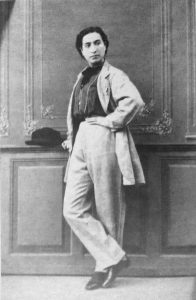Reprinted from Rome Reborn.
A new app created over the course of 22 years of research by an international team of academics and international experts will enable users to see the landmarks of ancient Rome as they were at the peak of the Eternal City’s urban development in 320 AD – from the Colosseum to the Forum. ‘Rome Reborn’ will create the illusion of flying over the Circus Maximus and of entering the Basilica of Maxentius, among other sites. “The dream of rebuilding Rome is an ancient one”, said the director of the project, Bernard Frischer, citing Flavio Biondo and Pirro Ligorio. Presenting the app together with Nathanael Tavares, the CEO of Flyover Zone Productions, which has the exclusive license, said he had the idea of creating it when he saw a model by Italo Gismondi made between 1935 and 1971. “I came up with the idea when I first saw it in Rome”.
The working committee for this unique and ambitious project was set up in 1996 and has now completed the largest digital reconstruction of an ancient city. Users will have the possibility of accessing over 7,000 monumental buildings over 14 square kilometers inside the Aurelian Walls, exploring every detail and perspective.
Available in English, Chinese and Italian as an app and for a personal computer even without 3D visors, Rome Reborn has already been approved by the Society for Classical Studies and will debut with the first chapters: the Basilica of Maxentius, the Imperial Forum and Flight Ancient Rome. The Colosseum and the Pantheon will follow. “You can fly over some (sites) and walk into others”, said Frischer who received the Pioneer Award and Tartessus for the project. His dream is to create 15 to 20 apps in three years: “Probably in three-four years we will also be able to unite them all in a unique intensive experience to walk across all of Rome”. Paolo Liverani, a professor of classical archaeology at the University of Florence, said: “We will update it with the progress of studies and technologies”. “I can’t remember projects like this one, with 22 years of work, remade three rimes and with such results – I can’t remember any other like it”, he noted.
“And it is also colored, like Rome at the time, and dynamic – we could, for example, take the same route as Constantine when he triumphantly walked into Rome”. Rome Reborn also created a community – it is possible to meet with other users and chat with them along the way (the website is www.romereborn.org).
Most of all, the app provides an occasion for research. The director of the Civic Museum of Rieti, Monica De Simone, said it can be used to learn, “having a strong scientific base”. “We experimented it with youths and families – what is most striking is the image of the ancient city, which stimulated everyone to pose questions”, she said.


